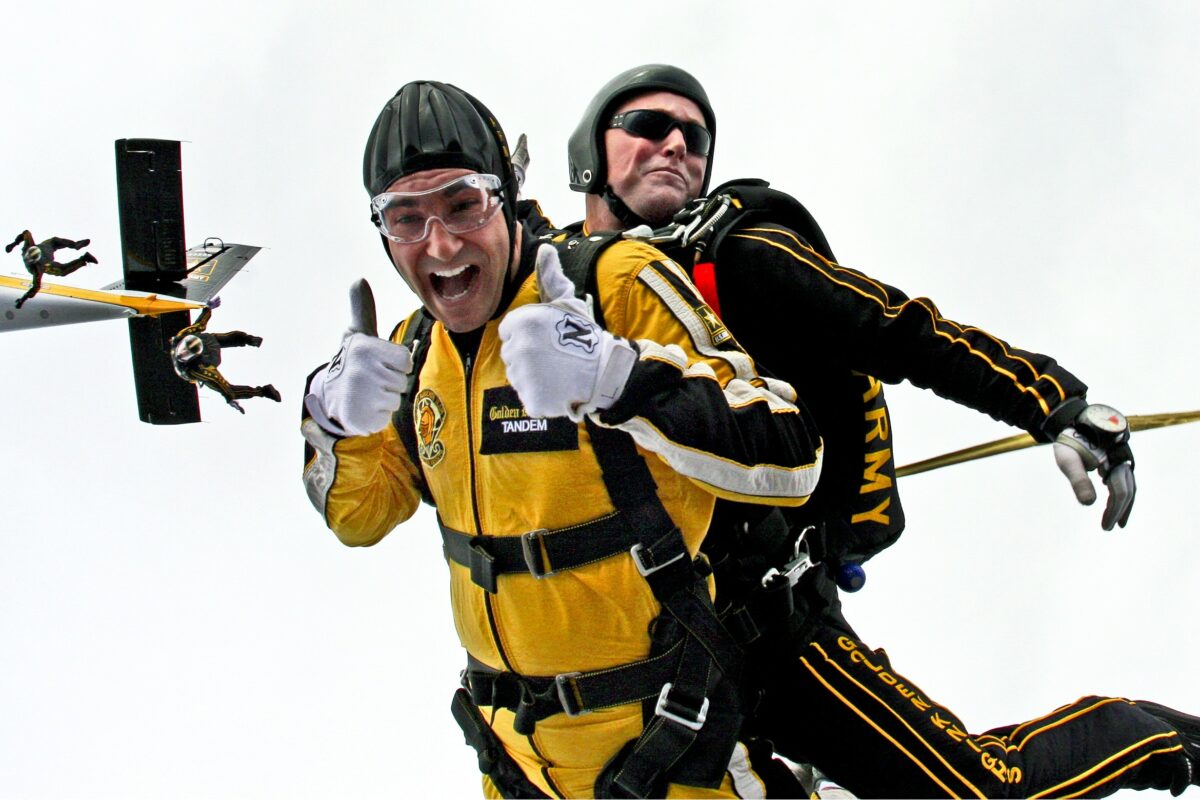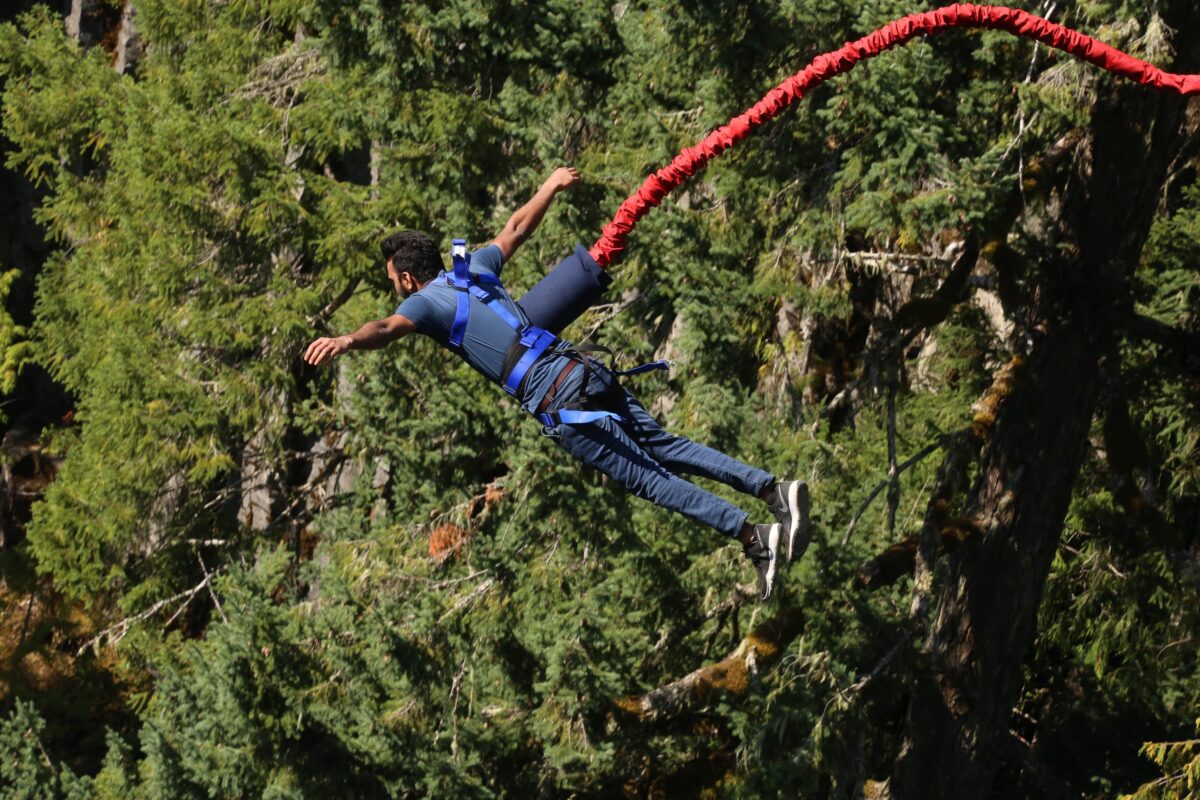Skydiving vs. Bungee Jumping: Which is Scarier?
Before being able to answer which is scarier, skydiving or bungee jumping, we think it’s necessary to consider skydiving vs. bungee jumping.
Skydiving and bungee jumping have a lot in common … or, at the very least, seem to have a lot in common. There’s a presumably plummeting drop involved in both skydiving and bungee jumping, but the nature of the drop and many integral features of both experiences are vastly different.
Though seemingly related in the adventurous, risk-taking category, there are actually many dissimilarities when it comes to skydiving vs. bungee jumping. If you’re ready for a little extreme excitement but want to see which activity is right for you, we’ll lay it all out below.
You Don’t Feel Like You’re Falling In Skydiving
You’d think jumping from a ledge, bridge, or cliff for bungee jumping would be the exact same sensation as skydiving. However, it’s far from it! With bungee jumping, you will experience a falling, stomach lurching sensation – whereas, in skydiving, you don’t feel like you’re falling at all.
A skydiving aircraft in flight will typically fly 80-90 knots and you – sitting snug as a bug in a rug within that aircraft in flight – are also moving 80-90 knots. Now, when you exit the plane, within about 5 seconds you’ll reach terminal velocity (~120 mph for a tandem skydiving pair). The delta in your speed within the aircraft and your speed in freefall is relatively small. So small, in fact, that your body likely won’t even recognize it. This is why you don’t experience that stomach dropping experience so common on roller coasters.
Another perk of terminal velocity is that you feel supported and in control. This is because the force of gravity upon your body is equal to the amount of air resistance you are encountering as you fall.
In bungee jumping, you go from being stationary to dropping several hundred feet – and you feel every bit of it. The body never reaches terminal velocity because it doesn’t have time to, and the result is that the experience feels a bit out of control and disorienting.
Skydiving Feels More Secure Than Other Extreme Sports
Skydiving and bungee jumping are both considered “extreme sports.” But, skydiving is likely the one during which you will feel the most secure.
On a tandem skydive, in particular, you are paired with a licensed, certified skydiving instructor. This instructor is with you throughout the entire experience – from the time you board the plane until your feet touch back down on sweet terra firma. Your instructor is there to answer your questions, ensure the equipment fits correctly and is secure, and to provide you with a little supportive encouragement along the way. You’re in it together.
In our opinion, bungee jumping lacks this security. On a bungee jump, you are braving it alone. Once you step from the platform, it’s all you … and only you. (Bu-bye.)
Skydiving Isn’t As Risky As You Might Think
Most assume that skydiving is as risky as it gets. After all, you are making a leap from a “perfectly good airplane” at 13,500 feet. So, when we tell you that skydiving isn’t as risky as it may seem, you’ll probably roll your eyes … but it’s true!
Here are the facts. Since the 70s the United States Parachute Association has been recording skydiving fatality statistics. In 2021, approximately 3.57 million jumps were completed, and of those jumps, there were 10 fatalities. That is a .00028 percent chance of dying while skydiving. The statistics concerning tandem skydiving are even more favorable, with only 1 fatality per every 500,000 jumps or a .0002 percent chance of dying.
Additionally, skydiving comes with a degree of fail-safe measures that bungee jumping simply does not. In bungee jumping, if there is an issue with the bungee cord, there’s no back-up.
In skydiving, all rigs are equipped with a main and a reserve parachute. Furthermore, rigs utilized for tandem and student skydiving also are required to include an automatic activation device (AAD). When pre-set parameters are met, this small but mighty device deploys the reserve parachute should the skydiver not be able to do so.

Skydiving vs. Bungee Jumping: Which Is Scarier?
If you have a fear of heights, both activities are likely to get your blood pumping. Although, strange as it seems considering you reach a height of nearly 2 miles above the ground, many people who have a fear of heights choose to skydive over bungee jump.
One of the reasons is that from way high up, height no longer registers. At jump altitude, your brain doesn’t have anything with which to triangulate your location, and so, though you are up quite high, it doesn’t really seem like it. On a bungee jump however, there are plenty of references and it’s easier to discern just how high up you are!
So, the time has come: skydiving vs. bungee jumping, which will you choose? Skydiving? Cool – book your jump, or ask for the best stocking stuffer of all – a skydiving gift certificate! Or if you still have a few lingering questions, give us a call! We’re always happy to chat with a would-be skydiver! Blue skies!
The post Skydiving vs. Bungee Jumping: Which is Scarier? appeared first on Skydive Paraclete XP.


